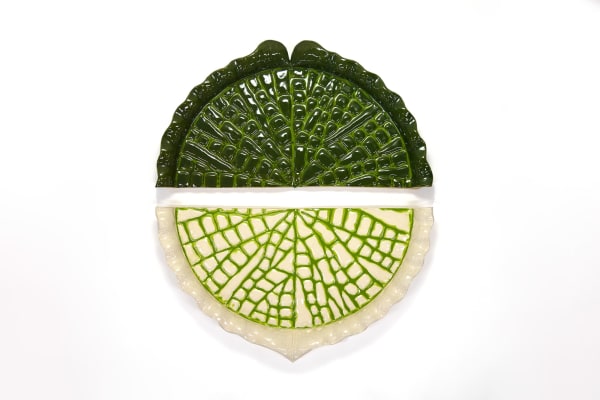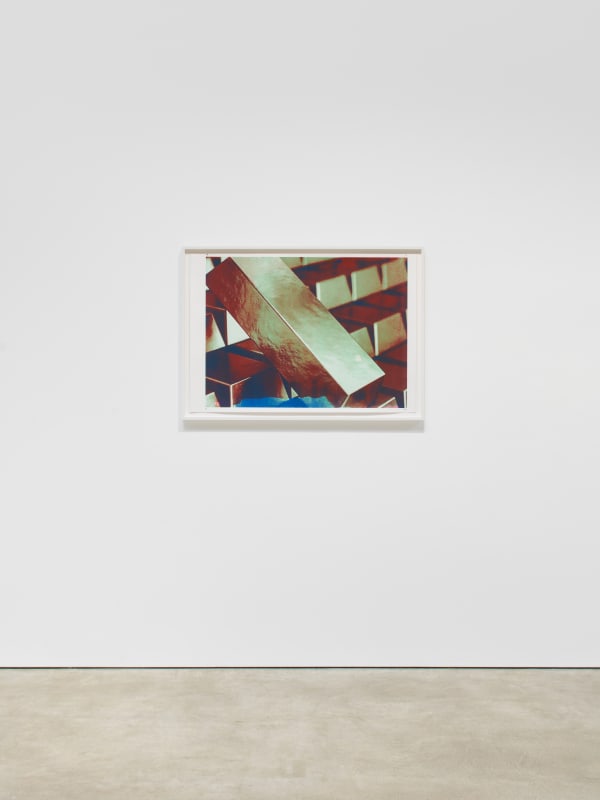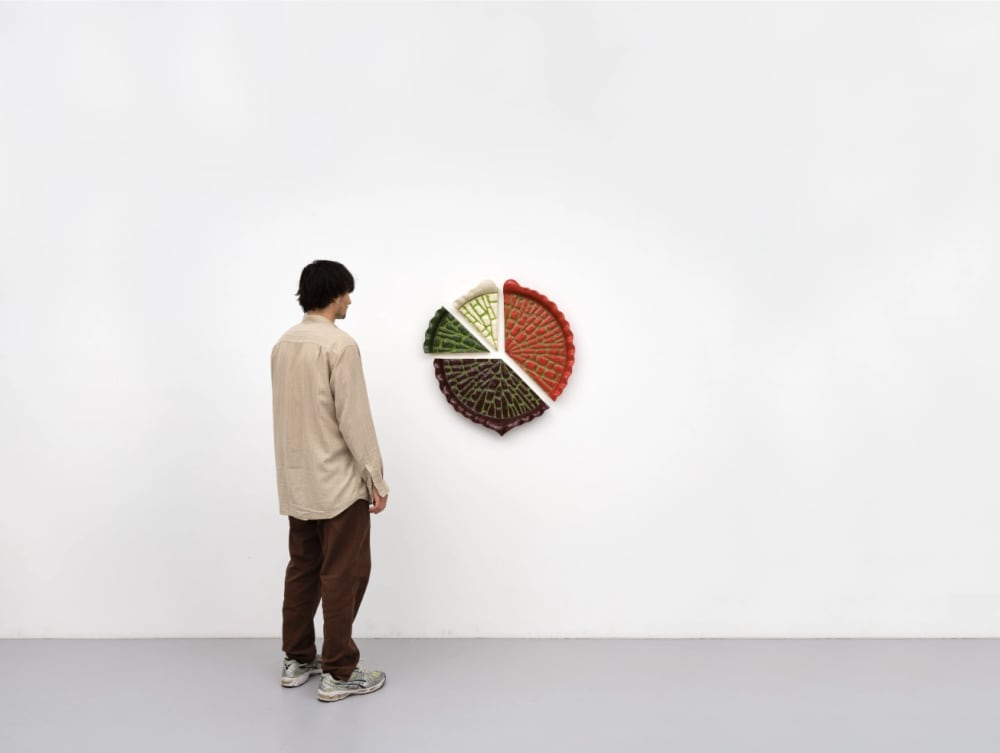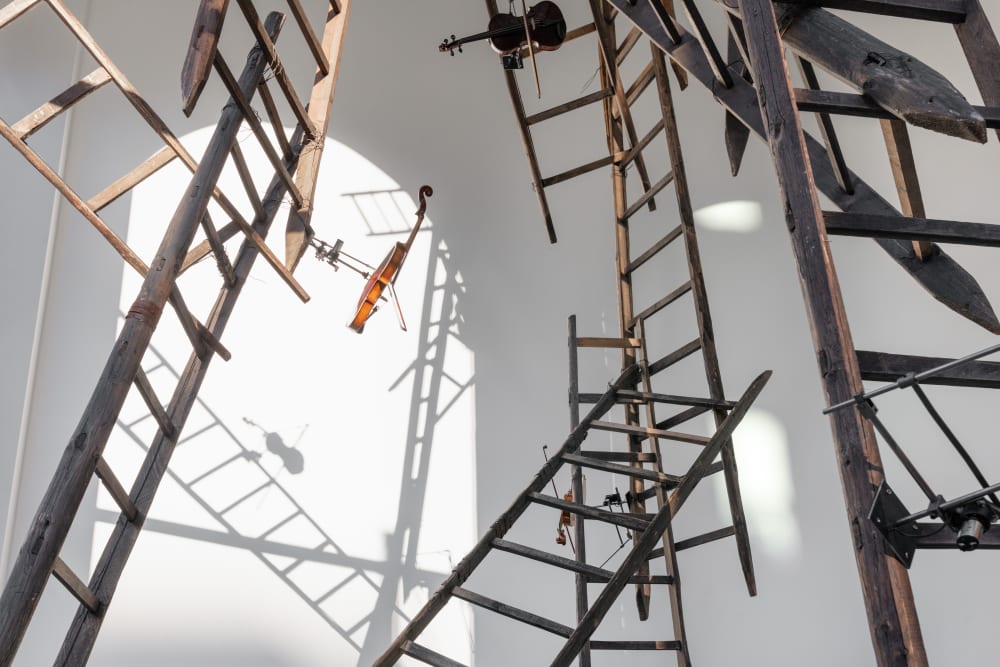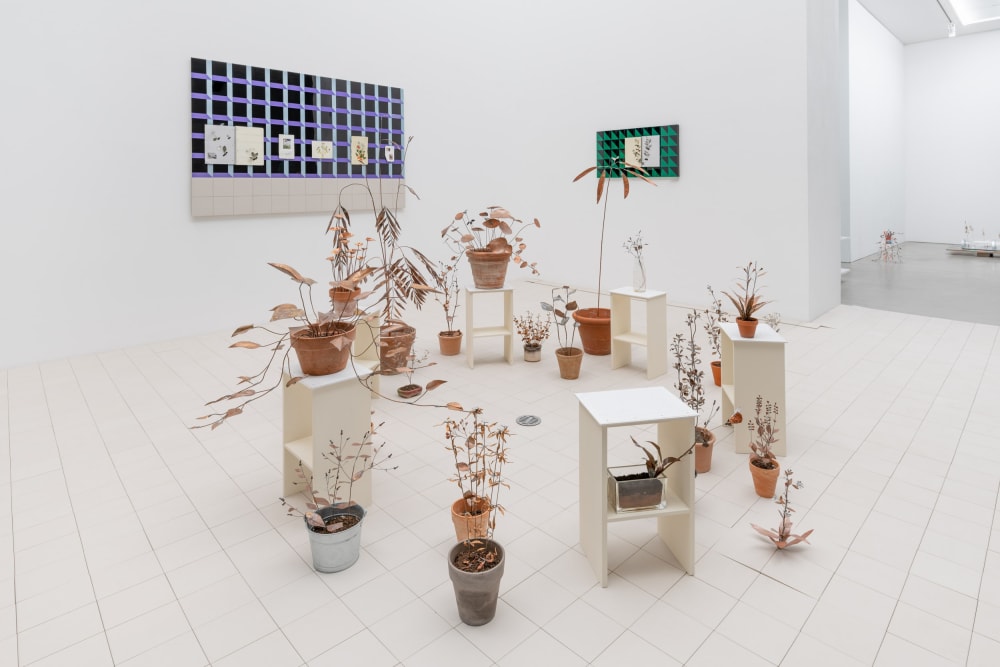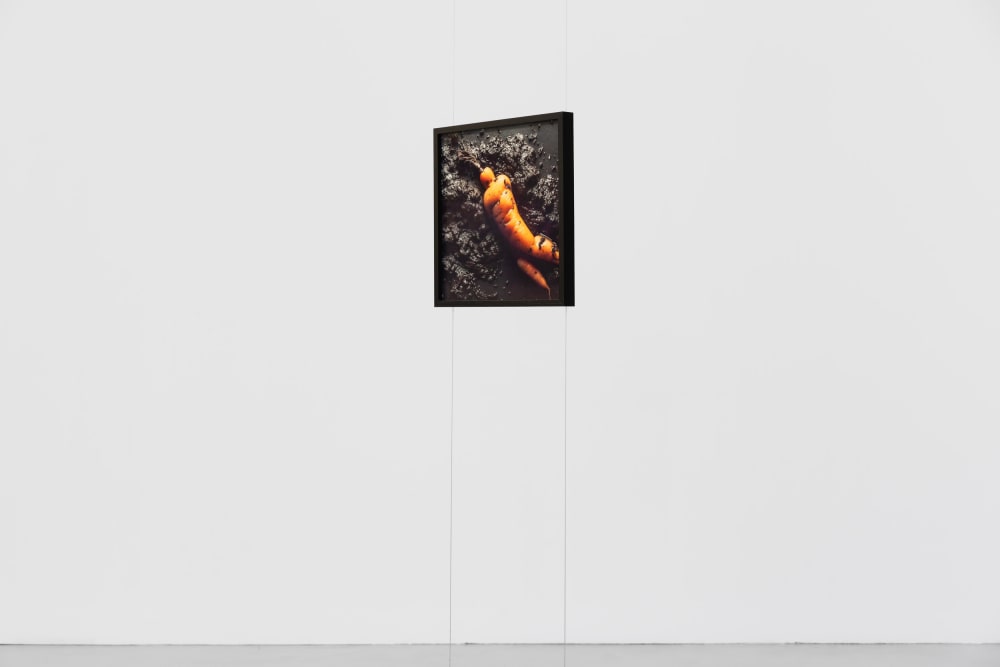EVERYTHING BUT THE KITCHEN SINK : GROUP SHOW
-
Introduction
Galerie Thomas Schulte presents Everything but the Kitchen Sink in the gallery’s recently opened space on Potsdamer Straße. The title of the exhibition, derived from the English idiom—meaning an abundance of things—at once showcases the multiplicity of voices and positions present in the gallery’s program while interrogating the place of everyday objects and their associated meanings. The exhibition facilitates a conversation between artists who have been with the gallery since its inception in the early 1990s and those who have been included in the program more recently. Everything but the Kitchen Sink thus offers an expansive view of the gallery’s diverse positions over the last 35 years.
At the same time, the show presents a framework for connecting a range of artistic approaches that engage with everyday life while resisting a literal interpretation. The idiom itself evokes multiple associations, including the notion of unreliable narration, whose flourishes forgo accuracy, destabilizing a story’s relationship to reality in ways that may or may not be immediately evident. Despite the apparent diversity of positions and material approaches in the artists’ works, a shared characteristic among them is a tendency to transform ordinary objects and re-contextualize them, while maintaining their connection to the familiar and the ubiquitous. In so doing, the works disrupt and play with the relationship between material objects and anticipations of meaning and categorization.
This interaction between object and anticipated meaning is playfully expressed in Rebecca Horn’s kinetic sculpture Grillon III (1995), The work at first appears like a mysterious little machine that produces a gentle noise reminiscent of a cricket. However, upon closer inspection the work reveals itself as a construction of ready-made objects—a hair comb, gears, and screws assembled to produce a cricket chirp, playing with the association offered by its title. Like Horn’s work, which detaches ready-made objects from their expected use, Collection of Four Perfect Vehicles (1992) by Allan McCollum, similarly plays with the connection between seemingly familiar forms and their anticipated meaning or function. In so doing, McCollum explores the intersections of artefact and commodity, as well as the tension between uniqueness and mass production. The four vessel-like objects serve no functional purpose; instead, they exist as silhouettes—acting as screens for various projections. These domestic objects made emphatically decorative, become fictitious in nature, much like props in a larger narrative.
P (2024), a hand-woven tapestry by Willem de Rooij, investigates meaning-making by analyzing the production and labor behind the object itself. The tapestry appears as a reduced geometric shape in monochrome yellow, stretched and installed like a canvas. By referencing a conventional format, the work calls into question the artwork’s relationship to broader aesthetic and referential systems, particularly within their exhibited context. Its meticulousness, as well as the time, labor, and craft behind its production, unfold alongside a perceived anonymity. Julian Irlinger’s series Cel Animation Background (2024) similarly plays with the association between meanings and their conduits, or rather how meanings are consumed and what materials are used to carry or display these meanings. Thus, stripping the image down to its background—something that usually is expected to provide a setting or context for foregrounded action and meaning-making—it surfaces as a detachment from the production and narratives behind it. Painted in the the quintessential style of a mid-century-modern animation, the series shows scene scapes emptied of any action and characters, it opens a space that one might instinctively fill with familiar associations while undergirding a sense of longing for foregrounded action and meaning.
This sense of symbolic foregrounding is palpable in Stephen Willats’ multi-panel wall installation Signs and Messages From Corporate America (1988), which examines the ways in which the objects and images that compose the everyday, reveal how they are organized and within systems of meaning. The work was produced by the artist based on first-hand interactions with employees at Merrill Lynch HQ in New York. A spattering of skewed photographic images of different sizes and colors form a chaotic cluster, like a stack of papers that has been tossed up in the air. A towering facade floats alongside small, personal office effects and trinkets, as well as logos bearing omnipresent symbols—modes of self-expression in interaction with and subsumed by those of the corporate working environment. In this way, the work serves as a kind of meta-discursive mapping of social structures, systems, and relationships. Likewise, an interplay of image and object in Hanna Stiegeler’s silkscreen prints from the series Curiosity Gap (2022) shows how mundane photos intended to manipulate have themselves been manipulated. Close-up digital images from seductive clickbait advertisements, typically juxtaposed with sensationalist headlines, are presented as abstracted and layered objects. Taken out of context, the images’ repetitions are enhanced; their simultaneous pervasiveness and elusivity made material.
The question of an object’s authenticity, in relation to its value and meaning, can be considered through another pair of works. In Maria Loboda’s Warrior with a Baroque Pearl Earring (2024) and Warrior with a Green Agate Earring (2024), two head-sized pieces of petrified wood sit atop a pedestal. Like fragments of an ancient sculpture eroded by time, they no longer resemble a head: identifiable only by a single earring that seems to dangle from an absent ear. It could be a display in an archeological museum, or else a jewelry shop—as the handmade earrings, which recall vintage designs by luxury fashion brands, imparts an asynchronous quality. A new sculpture by José Montealegre takes the form of a personal article with a connection to the body: Desterrado (2024)—meaning banished, dispossesed, or even landless—is a 15th-century-style suit of armor made of copper and lying horizontally on a low plinth. It appears to be a historical relic, the hollowed-out remnants of what has been lost, but presents us with a layering of fictions and narrative references. Some of the armor’s plates are fastened together with heart-shaped lockets, like those which close shut a diary or ones left by lovers to adorn bridges—a melding of seemingly discordant elements which belie the story behind the sculpture.
Similarly concealed dynamics are dissected by Lena Henke in her work The definition of motherhood in our culture is one in which the mother sacrifices herself to the child. She sacrifices herself. Her self is lost. The child becomes the center of her life; the child's needs are placed before her needs, until often, she lives in her child, through her child, placing her spirit in the child's body, until the merging of her self with the child is complete. (2022). Installed on the wall, a ceramic lily pad with a glazed, shiny and intricate surface, has been sliced into sections like a pie chart. A structure from the natural environment is abstracted to represent a socially constructed one. The commonness of its circular form and its changed orientation flip a specific object into a more totalizing symbol while elaborating an experience that is highly personal in nature. -
Installation Views
-
Works
-
Inquire about works in "Everything but the Kitchen Sink"

-
Artists on view


